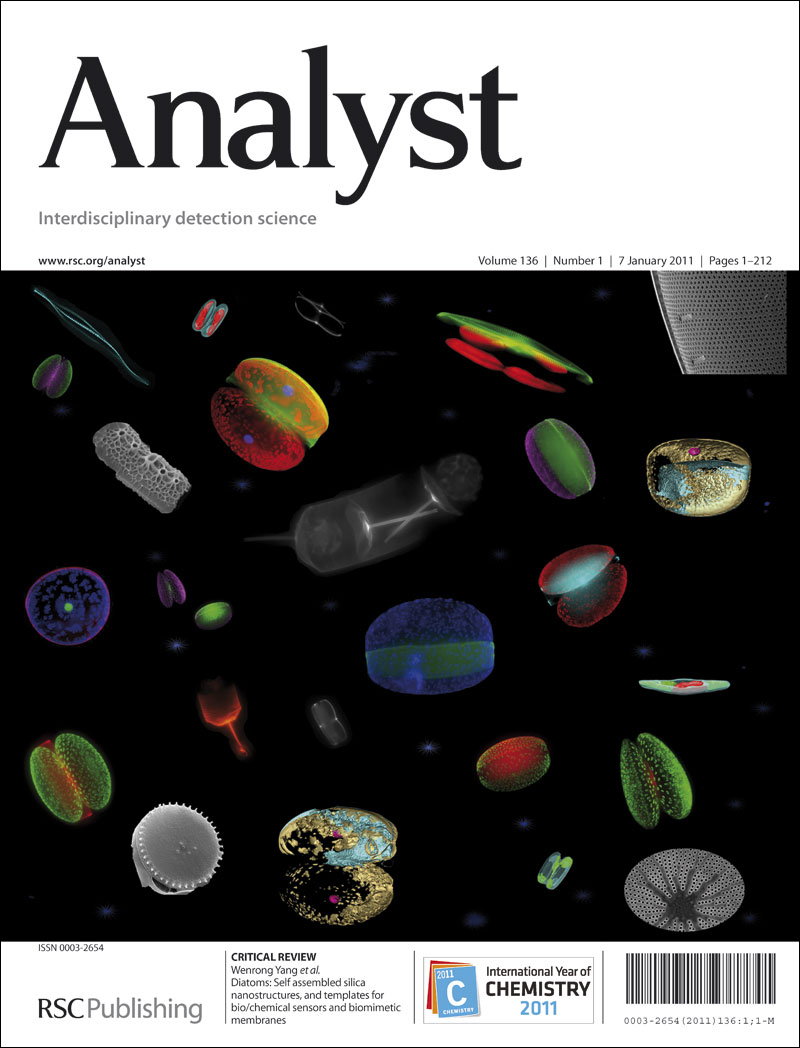Hyphenated Mass Spectrometry Methods for Enlarged Capacity Data Storage Systems based on Chemical Mixtures
IF 3.6
3区 化学
Q2 CHEMISTRY, ANALYTICAL
引用次数: 0
Abstract
Encoding abstract information in chemical mixtures uses the selective presence or absence of specific analytes, creating a binary-based framework for data storage. Data storage capacity (C in bits) can be maximized by encoding with large analyte libraries (M) at distinguishable concentration levels (L), where C = M·log2L. However, roboust decoding of such complex libraries remains challenging for practical applications. This study introduces hyphenated Mass Spectrometry (MS) methods, Liquid Chromatography (LC) and Flow Injection Analysis (FIA) that meet the dual requirements of high analyte coverage and precise quantitation to maximize data storage capacity. Encoding and decoding use plant metabolite libraries to create specific mixtures. Using LC-MS, it is feasible to encode and decode up to 200 bits per mixture, with scalability reaching 10³-10⁴ bits at the cost of low decoding rates (ca. 0.5 bits / sec). FIA-MS offers a high-throughput alternative, handling 100 bits at faster rates (ca. 3 bits / sec). The data storage capacity can be three-fold expanded by incorporating up to eight quantitation levels, supporting binary, quaternary, or octal encoding schemes. To demonstrate the practical application of these methods, we encode and decode various digital file formats such as texts and multicolor images.基于化学混合物的大容量数据存储系统的连字符质谱方法
对化学混合物中的抽象信息进行编码,使用特定分析物的选择性存在或不存在,为数据存储创建基于二进制的框架。数据存储容量(C以位为单位)可以通过在不同浓度水平(L)下使用大型分析物库(M)进行编码来最大化,其中C = M·log2L。然而,如此复杂的库的强大解码在实际应用中仍然具有挑战性。本研究引入联用质谱(MS)、液相色谱(LC)和流动注射分析(FIA)方法,满足高分析物覆盖率和精确定量的双重要求,以最大限度地提高数据存储容量。编码和解码使用植物代谢物库来创建特定的混合物。使用LC-MS,每个混合物的编码和解码高达200比特是可行的,可扩展性达到10³-10⁴比特,但解码率较低(约0.5比特/秒)。FIA-MS提供了一个高吞吐量的替代方案,以更快的速率(约3比特/秒)处理100比特。数据存储容量可以通过合并多达八个量化级别扩展三倍,支持二进制、四进制或八进制编码方案。为了演示这些方法的实际应用,我们编码和解码各种数字文件格式,如文本和多色图像。
本文章由计算机程序翻译,如有差异,请以英文原文为准。
求助全文
约1分钟内获得全文
求助全文
来源期刊

Analyst
化学-分析化学
CiteScore
7.80
自引率
4.80%
发文量
636
审稿时长
1.9 months
期刊介绍:
"Analyst" journal is the home of premier fundamental discoveries, inventions and applications in the analytical and bioanalytical sciences.
 求助内容:
求助内容: 应助结果提醒方式:
应助结果提醒方式:


